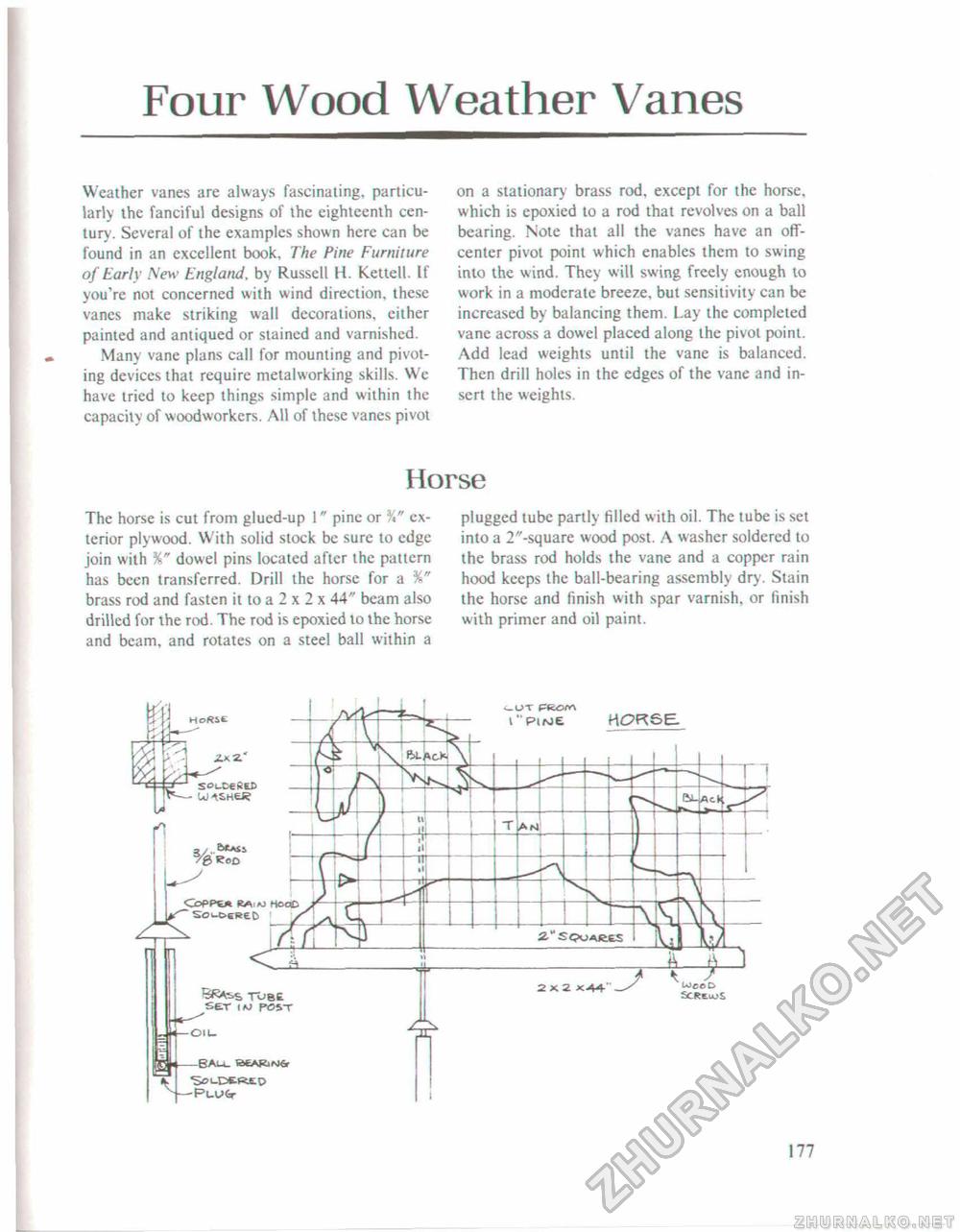Woodworker's Journal 101-Projects-for-Woodworkers, страница 184
Four Wood Weather VanesWeather vanes are always fascinating, particularly the fanciful designs of the eighteenth century. Several of the examples shown here can be found in an excellent book. The Pine Furniture of Early New England, by Russell H. Kettell. If you're not concerned with wind direction, these vanes make striking wall decorations, either painted and antiqued or stained and varnished. Many vane plans call for mounting and pivoting devices that require metalworking skills. We have tried to keep things simple and within the capacity of woodworkers. All of these vanes pivot on a stationary brass rod, except for the horse, which is epoxied to a rod that revolves on a ball bearing. Note that all the vanes have an off-center pivot point which enables them to swing into the wind. They will swing freely enough to work in a moderate breeze, but sensitivity can be increased by balancing them. Lay the completed vane across a dowel placed along the pivot point. Add lead weights until the vane is balanced. Then drill holes in the edges of the vane and insert the weights. Horse The horse is cut from glued-up 1" pine or exterior plywood. With solid stock be sure to edge join with %" dowel pins located after the pattern has been transferred. Drill the horse for a %" brass rod and fasten it to a 2 x 2 x 44" beam also drilled for the rod. The rod is epoxied to the horse and beam, and rotates on a steel ball within a plugged tube partly filled with oil. The tube is set into a 2"-square wood post. A washer soldered to the brass rod holds the vane and a copper rain hood keeps the ball-bearing assembly dry. Stain the horse and finish with spar varnish, or finish with primer and oil paint. 177 |








